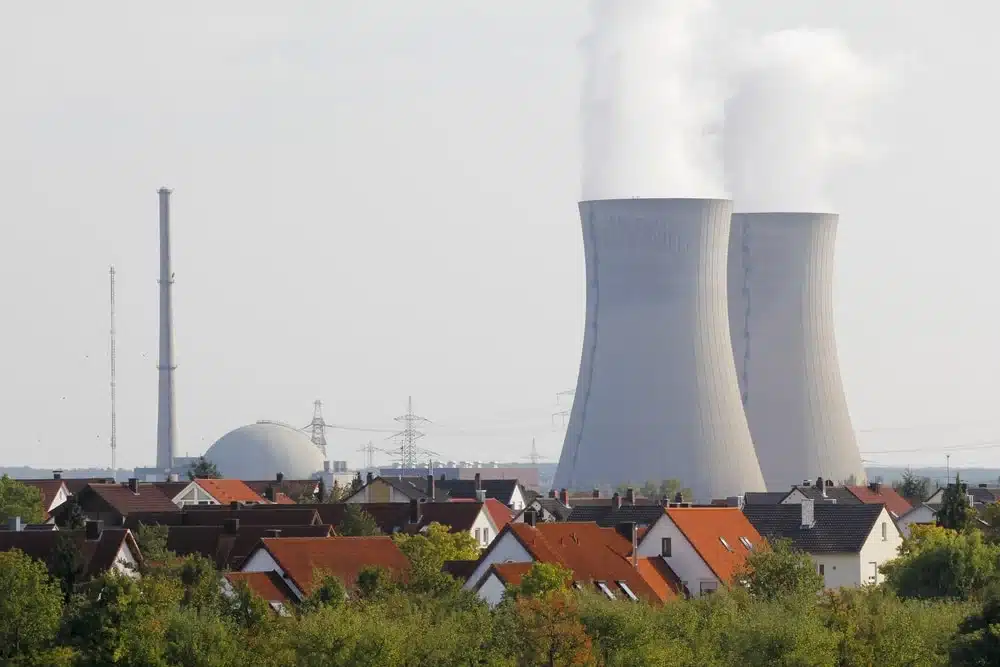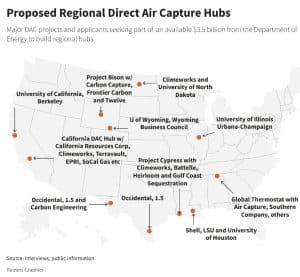With Direct Air Capture (DAC) technology gaining momentum, some companies involved are facing the significant challenge of securing enough clean power to sustain their energy-intensive operations in the US.
As DACs Expand, So Does the Quest for Clean Energy
Earlier this year, Climeworks launched the world’s largest DAC plant in Hellisheiði, Iceland. The location was ideal, offering abundant geothermal heat and power. But as Climeworks shifted its focus to the U.S., drawn by federal subsidies and opportunities for expansion, the company faced a new hurdle: energy procurement.
Well, Douglas Chan, Chief Operating Officer of Climeworks, emphasized the importance of understanding the U.S. grid, which the company has studied for nearly three years. They pioneer in absorbing CO2 from the atmosphere and sell the carbon offsets to major corporations such as Microsoft. However, without a reliable source of clean power, the entire purpose of this technology i.e. reducing carbon emissions could be compromised.
Is Funding Enough to Navigate the U.S. Energy Landscape?
Last year, in August, the DOE announced a whopping $1.2 billion in funding to develop two major DAC facilities led by Climeworks and Occidental (Oxy). The funding was part of President Biden’s Investing in America agenda, marking the beginning of the Bipartisan Infrastructure Law’s Regional DAC Hubs program, designed to create a nationwide network of large-scale carbon removal sites.
Secretary of Energy Jennifer M. Granholm emphasized the importance of these investments by remarking,
“Addressing climate change requires not just reducing emissions but also removing existing CO2 from the atmosphere. This historic investment will help build a crucial industry for combating climate change while supporting local economies.”
For example, the landmark project is led by 1PointFive, a subsidiary of Occidental. This project will initiate the installation of the South Texas Direct Air Capture (DAC) Hub. The hub on King Ranch in Kleberg County aims to become the world’s first DAC plant capable of removing up to 1 million metric tons of CO2 annually.
Clean Power Solutions for DAC Expansion
As the U.S. power consumption continues to rise, DAC companies face long grid connection queues, some stretching over the years. Thus, many DAC companies are choosing to follow strict carbon accounting standards to meet the expectations of buyers and carbon credit exchanges.
Thus, funding is not a problem for DAC plants, but energy procurement is. S&P Global reported that Puro.earth, the carbon removal certifier requires detailed energy emissions analysis for DAC projects listed on its exchange. Such projects must use renewable energy certificates or similar instruments to offset grid emissions, ensuring that the electricity is generated and consumed within the same physical grid and calendar year.
DAC Projects in the U.S.
source: Reuters
The good news is the challenge of securing sufficient clean power has not deterred the sector’s growth. Consequently, Climeworks’ upcoming facility, part of the Battelle-led Project Cypress hub in Louisiana, is set to capture about 1 MMTCO2 annually. This is much more than its current Iceland plant, Mammoth. This project also comes under DOE’s 1.2 billion funding program. Notably, Climeworks is working with renewable energy developers to secure virtual power purchase agreements to achieve this target.
Meanwhile, Heirloom’s initial projects, also part of Project Cypress, will rely on additional wind, solar, and storage facilities. This approach is crucial as DOE has committed around $600 million each to support large-scale DAC hubs on the Gulf Coast.
Furthermore, this level of scrutiny highlights the importance of “additionality”—a concept ensuring that the clean power used by DAC plants is genuinely new and not merely diverted from other uses.
In conclusion, DAC offers great potential in combating climate change. However, as it expands in the U.S., securing clean energy to power operations is a major challenge. With viable and innovative energy solutions, major carbon capture companies like Climeworks and Heirloom are bound to succeed.



